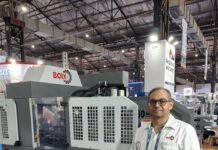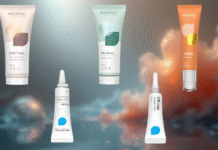
The 2014-15 financial year saw significant capacity growth in the monocarton industry with about 16 brand new packaging configuration presses imported. However, although folding cartons volume grew, price realization remained under pressure. There were a number of orders of presses that go beyond the 6-color coater UV which is practically a standard configuration for the Indian industry. In the year gone by several 7-color plus coater UV presses were installed including presses with a cold foil in-line option.
Several presses which can be said to be the overflow from the last financial year have been installed in April itself and several others are under shipment. Thus we should have a large number of packaging configuration offset presses installs in the April to June quarter of the 2015-16 financial year.
It seems that the basic packaging configuration in India is the 28 x 40-inch 6-color plus coater full UV press — (meaning three interdeck and an end-of-line UV curing cassette). Ironically, we have described this configuration as the dream machine for about ten years and now this has become a basic must have configuration especially for the large number of carton printers and converters who have been managing with used presses and also for many of the new entrants or lateral migrants from commercial printing. Even many of the monocarton suppliers to the pharmaceutical industry who earlier insisted that they do not need UV curing for their type of cartons are now convinced that full UV configurations are
needed to grow their business.
 The leading three or four monocarton suppliers continue to try and create a distance between themselves and the rest of the market (apart from keeping up with each other). They continue to add locations, and to buy presses with increased automation and logistics, 7 and 8-color presses with foilers. Essentially they continue to choose from a handy list of speed and technology options such as interchangeable UV curing casettes, ink agitators and temperature controls that can add speed, value, differentiation and possibly efficiency provided their customers the consumer product companies can utilize the new capabilities with innovative packaging design.
The leading three or four monocarton suppliers continue to try and create a distance between themselves and the rest of the market (apart from keeping up with each other). They continue to add locations, and to buy presses with increased automation and logistics, 7 and 8-color presses with foilers. Essentially they continue to choose from a handy list of speed and technology options such as interchangeable UV curing casettes, ink agitators and temperature controls that can add speed, value, differentiation and possibly efficiency provided their customers the consumer product companies can utilize the new capabilities with innovative packaging design.
In the April 2015 to March 2016 financial year, the number of packaging configuration presses installed are likely to be around the same as the previous year — about 15 to 17. However, the number of 74 and 75 cm presses are likely to decline and most of the installs will be 28 x 40-inch presses since the price differential is not nearly as much as the size difference. Similarly many carton producers are now looking at 7-color coater presses which bodes well for brand owners so that they can develop new carton designs using more colors without worrying about their viability in production.
There continue to be new entrants to the monocarton segment — from both commercial printing and also from plants supported or owned by brand owners and exporters themselves. In addition there are a large number of converters who can no longer continue to compete with their second hand presses. Thus they are part of a considerable replacement market as are many of the multiple leading converters who are replacing their 7 and 10-year-old new bought presses for newer technology presses. For the leading converters this can mean the wholesale replacement of four presses with three new technology presses that have new automation technology, value add options, are raised on ever-higher plinths and are of course a bit faster.











